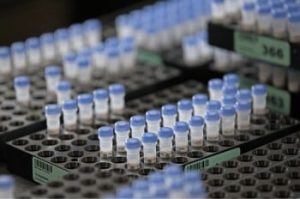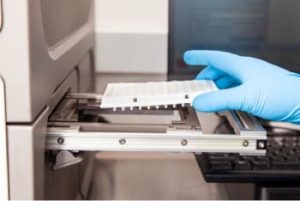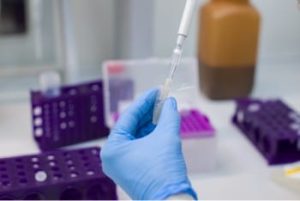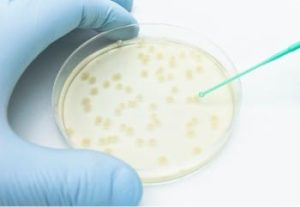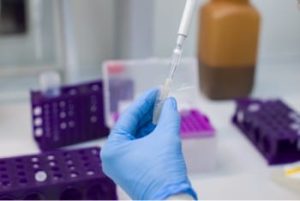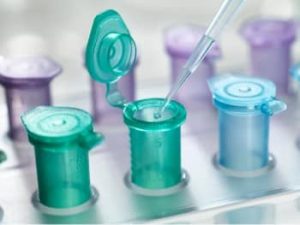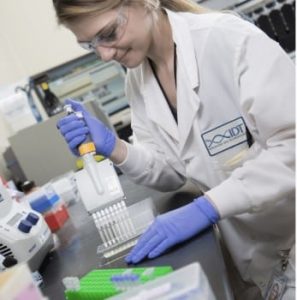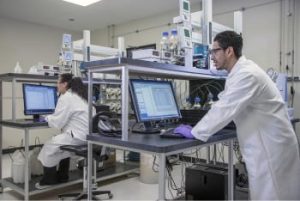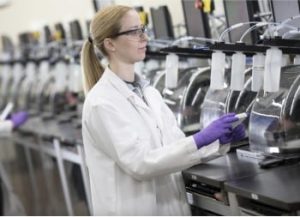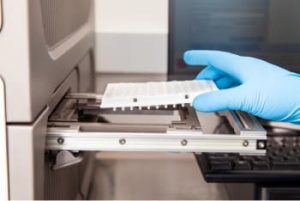When it comes to mass COVID-19 testing for the foreseeable future, multiplex assays will be the name of the game.
Multiplex assays—tests that look for more than one virus at a time—are nothing new, though their application to the intersection of COVID-19 and seasonal influenza, of course, is. Testing for multiple agents at once is key as the COVID-19 pandemic collides with the flu season, experts say.
The U.S. Food and Drug Administration (FDA) granted an Emergency Use Authorization (EUA) on July 2, 2020, for the U.S. Centers for Disease Control and Prevention (CDC) Influenza SARS-CoV-2 (Flu SC2) Multiplex Assay. The CDC test is a polymerase chain reaction (PCR) test that detects and differentiates RNA markers from SARS-CoV-2, influenza A, and influenza B in both the upper and lower respiratory systems.
“Because some of the symptoms of flu and COVID-19 are similar, it may be hard to tell the difference between them based on symptoms alone, and testing may be needed to help confirm a diagnosis,” the CDC said. “Flu and COVID-19 share many characteristics, but there are some key differences between the two.”
Symptoms shared between the two infections include fever, chills, cough, difficulty breathing, fatigue, body aches, headache, sore throat, runny nose, nausea, vomiting, and diarrhea. COVID-19 spreads more readily and is often more severe. Only testing can tell the difference between the two.
Besides helping to pinpoint those who have the virus and stop the spread of COVID-19, getting three results from one test means less discomfort for patients and conserves resources all around—a big deal during a time when everything from cotton swabs to PPE has been in short supply.
Multiplex PCR tests were first described in 1988 to detect deletions in the dystrophin gene. In 2008, the practice was extended to microsatellites and SNPs.
Multiplex PCRs contain multiple primer sets in a single PCR mix, and produce amplicons of different sizes and sequences.
A 2015 article in the Journal of Clinical Microbiology noted the general problem with infectious diseases: very few of them can be definitively determined by their symptoms. A patient may present with fever and diarrhea, which can indicate a wide range of potential infections. In the absence of molecular testing with agent-specific primers, an empirical diagnosis could call for a handful of potential therapies. The advent of new multiplex PCR panels, while sometimes expensive and occasionally labor-intensive, can quickly pinpoint agents responsible for acute respiratory infection, which often permits outpatient treatment and omits the needless use of antibiotics. Other benefits include quicker access to treatment, shorter duration of symptoms, less time away from work or school, shorter ER stays, shorter hospital admission stays, quicker starts for infection control measures, reduced pharmacy and lab costs, and reduced side effects.
The CDC test released last summer takes about four hours to complete and is meant to be performed by state and local public health labs.
In recent months, a number of private companies have rolled out their own multiplex versions. On Sept. 8, 2020, clinical lab giant LabCorp debuted a COVID-19, influenza A/B, and respiratory syncytial virus single-panel test and also applied to offer an at-home collection version. Besides the CDC test, there are several other multiplex influenza/COVID-19 assays, all of which are on closed-system platforms.
- BioFire Diagnostics Biofire Respiratory Panel 2.1 and Panel 2.1-EZ
- GenMark Diagnostics ePlex Respiratory Pathogen Panel 2
- QIAGEN QIAstat-Dx Respiratory SARS-CoV-2 Panel
- Roche Molecular Systems cobas SARS-CoV-2 & Influenza A/B and cobas SARS-CoV-2 & Influenza A/B Nucleic Acid Test
- Cepheid Xpert Xpress SARS-CoV-2/Flu/RSV on the GeneXpert Dx and GeneXpert Infinity systems and GeneXpert Xpress System (Tablet and Hub Configurations) platforms
- Quidel Sofia 2 Flu + SARS Antigen FIA
- Quest Diagnostics RC COVID-19 + Flu RT-PCR
One major industry trend being seen in these multiplex tests is the demand for open systems over closed systems. In closed systems, all the components to run the test are included and tied to a dedicated instrument—think of it as the old days of cell phones, when each manufacturer had their own charging cable interface. Open systems, in contrast, can work on a variety of devices and help alleviate testing bottlenecks.
“As shortages of testing kits can cause bottlenecks within laboratories, an important consideration when installing new capacity is which type of equipment to install: open systems, which can run a wider range of test methods, or closed systems, which require proprietary reagents manufactured by OEMs,” noted a report from McKinsey. “The choice could have a significant impact on future testing capacity, as reagents for open system are manufactured by considerably more suppliers.”
This year’s crop of tests fits neatly with other major industry trends that have been years in the making, including miniaturization, simplified workflows, demand for open systems, and more reliable data.
“With the authorization of these tests, the FDA is helping address concerns in anticipation of this upcoming flu season during the COVID-19 pandemic, which might be especially worrying for some Americans,” FDA Commissioner Stephen Hahn, MD, said in a statement. “With just one swab or sample, combination tests can be used to get answers to Americans faster. This efficiency can go a long way to providing timely information for those sick with an unknown respiratory ailment.”

